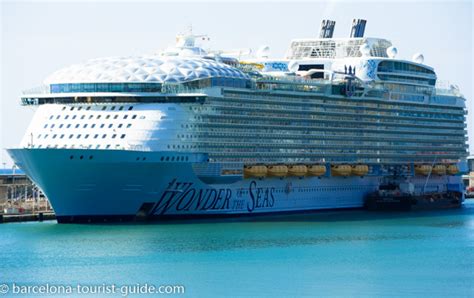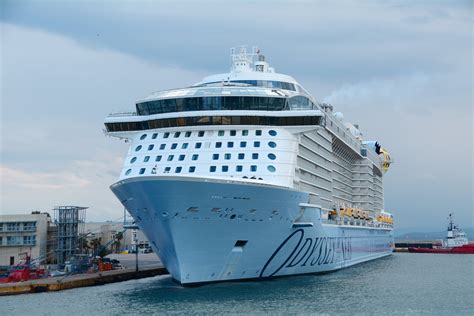Norovirus, a highly contagious virus causing severe gastrointestinal illness, has been a significant health concern on cruise ships, impacting passengers and crew alike. This article delves into the intricacies of norovirus, from its symptoms and transmission to its widespread impact on health. We’ll explore historical outbreaks on cruise ships, analyzing case studies and statistics to understand its prevalence. By examining the factors contributing to its spread and outlining best practices for prevention, we aim to equip travelers with essential knowledge. Learn about cruise line protocols, passenger precautions, treatment options, and future innovations in sanitation to stay informed and protected against norovirus while enjoying your cruise adventure.
Join dominure.com as we delve deeply into this topic.
1. Overview of Norovirus: Symptoms, Transmission, and Impact on Health
Norovirus is a highly contagious virus that leads to acute gastroenteritis, characterized by sudden onset of severe stomach pain, nausea, vomiting, and diarrhea. Symptoms typically appear 12 to 48 hours after exposure and can last from one to three days, sometimes longer in young children, older adults, or people with other health conditions. Transmission occurs through direct contact with an infected person, consumption of contaminated food or water, or touching surfaces contaminated with the virus. Due to its resilience, norovirus can survive on surfaces for days, making it particularly challenging to control in densely populated settings like cruise ships. The impact on health can be significant, leading to severe dehydration, especially in vulnerable populations. Norovirus outbreaks on cruise ships not only cause individual illness but also strain onboard medical resources and disrupt travel plans. Understanding the symptoms, transmission modes, and health impacts of norovirus is crucial for implementing effective prevention and control measures, ensuring the well-being of passengers and crew on cruise ships.

2. Historical Outbreaks of Norovirus on Cruise Ships: Case Studies and Statistics
Norovirus outbreaks on cruise ships have been well-documented over the years, highlighting the virus’s persistent challenge to maritime health. One notable case occurred in 2002 when over 500 passengers and crew aboard the Carnival Pride fell ill during a week-long voyage. This incident underscored the virus’s rapid transmission in confined spaces. In 2014, another significant outbreak affected nearly 700 passengers on Royal Caribbean’s Explorer of the Seas, leading to a shortened cruise and extensive sanitation measures.
Statistics from the Centers for Disease Control and Prevention (CDC) reveal that norovirus is the leading cause of gastroenteritis outbreaks on cruise ships, accounting for about 90% of reported cases. Between 2008 and 2014, the CDC’s Vessel Sanitation Program documented 74 norovirus outbreaks on cruise ships visiting U.S. ports, impacting thousands of passengers and crew members.
Case studies show that outbreaks often begin with a single infected individual and can quickly escalate due to the virus’s highly contagious nature. Contributing factors include close living quarters, shared dining areas, and high-touch surfaces. Despite stringent cleaning protocols, the resilience of norovirus on surfaces poses ongoing challenges.
These historical outbreaks and statistical data emphasize the need for rigorous preventive measures and swift response strategies to manage norovirus on cruise ships effectively. Understanding past incidents helps in developing better protocols to protect the health and safety of passengers and crew members.

3. Factors Contributing to Norovirus Spread on Cruise Ships
Several factors contribute to the rapid spread of norovirus on cruise ships, making these vessels particularly vulnerable to outbreaks. The confined living quarters and close proximity of passengers and crew facilitate person-to-person transmission. Shared dining facilities, buffet-style meals, and communal food service increase the risk of foodborne transmission, especially if proper hygiene practices are not strictly followed.
High-touch surfaces, such as handrails, elevator buttons, and doorknobs, are potential hotspots for virus transmission. Norovirus’s resilience on surfaces, where it can survive for days, exacerbates the challenge of controlling its spread. Additionally, the constant turnover of passengers embarking and disembarking introduces new individuals who might be asymptomatic carriers of the virus, further complicating containment efforts.
Inadequate hand hygiene among passengers and crew is a significant factor, as the virus can be easily transferred from contaminated hands to the mouth. The social nature of cruises, with numerous activities and interactions, also contributes to the spread. Understanding these factors is crucial for developing and implementing effective preventive measures and response strategies to minimize the risk of norovirus outbreaks on cruise ships.

4. Best Practices for Preventing Norovirus Infection Before and During Cruises
Preventing norovirus infection requires a combination of proactive measures both before and during a cruise. Prior to boarding, passengers should ensure they are in good health and avoid traveling if experiencing any symptoms of illness. It’s also advisable to receive a flu vaccination, as this can help distinguish between flu-like symptoms and norovirus.
During the cruise, maintaining rigorous hand hygiene is paramount. Passengers should wash their hands frequently with soap and water, especially before eating, after using the restroom, and after touching high-contact surfaces. Hand sanitizers containing at least 60% alcohol can be used as an additional precaution but should not replace hand washing.
Avoiding self-serve buffets and ensuring that food is thoroughly cooked and properly handled can reduce the risk of foodborne transmission. Passengers should also drink bottled or treated water and avoid ice cubes that may have been contaminated.
Regularly disinfecting personal items and cabin surfaces with disinfectant wipes can help minimize the risk of contact transmission. Passengers should be mindful of symptoms and report any signs of illness to the ship’s medical staff immediately to receive appropriate care and to prevent further spread.
By adhering to these best practices, passengers can significantly reduce their risk of contracting norovirus, contributing to a healthier and more enjoyable cruise experience for everyone onboard.

5. Cruise Line Protocols and Measures for Handling Norovirus Outbreaks
Cruise lines have established stringent protocols and measures to handle norovirus outbreaks, prioritizing the health and safety of passengers and crew. Upon detection of a suspected outbreak, immediate action is taken to isolate affected individuals to prevent further transmission. Medical staff onboard are trained to identify symptoms and provide appropriate care, including hydration and medication to manage symptoms.
Enhanced sanitation procedures are implemented, including frequent and thorough cleaning of high-touch surfaces such as handrails, elevator buttons, and doorknobs. Cabins of infected passengers are subjected to deep cleaning and disinfection. Public areas, including dining facilities and restrooms, are regularly sanitized with EPA-approved disinfectants effective against norovirus.
Cruise lines also enforce strict food safety protocols. Food handling staff receive specialized training to prevent contamination, and self-serve buffets may be suspended during an outbreak. The use of pre-packaged meals and bottled water is encouraged to minimize the risk of foodborne transmission.
Communication with passengers is crucial during an outbreak. Passengers are informed about the situation and given guidelines on how to protect themselves, including practicing good hand hygiene and avoiding contact with sick individuals. Educational materials on norovirus prevention are often distributed, and additional hand sanitizer stations are made available throughout the ship.
These comprehensive protocols and measures aim to quickly contain and mitigate the impact of norovirus outbreaks, ensuring a safe and healthy environment for everyone on board.

6. Steps Passengers Can Take to Protect Themselves and Others from Norovirus
Passengers can play a crucial role in protecting themselves and others from norovirus on cruise ships by following a few key steps. First and foremost, maintaining excellent hand hygiene is essential. Passengers should wash their hands frequently with soap and water, especially before eating, after using the restroom, and after touching commonly used surfaces. While hand sanitizers can be a useful supplement, they should not replace thorough hand washing.
Avoiding direct contact with sick individuals is another critical measure. Passengers who notice others exhibiting symptoms of norovirus, such as vomiting or diarrhea, should keep their distance and report the case to the ship’s medical staff immediately.
It’s also important to be mindful of food safety. Passengers should opt for hot, freshly cooked meals and avoid potentially risky foods, such as raw or undercooked items. Drinking bottled or treated water instead of tap water can also help reduce the risk of infection.
Personal items and cabin surfaces should be regularly disinfected with wipes or sprays containing effective cleaning agents. Passengers feeling unwell should self-isolate in their cabins and seek medical attention promptly to prevent the spread of the virus to others.
By adhering to these preventive steps, passengers can significantly reduce the risk of contracting norovirus and contribute to a healthier environment on the cruise ship, ensuring a safer experience for everyone onboard.

7. Treatment Options and What to Do If You Get Sick on a Cruise
If you contract norovirus while on a cruise, it’s important to take immediate steps to manage your illness and prevent spreading it to others. First, stay hydrated by drinking plenty of fluids, such as water or oral rehydration solutions, to counteract the dehydration caused by vomiting and diarrhea. Avoid caffeinated, alcoholic, or sugary beverages, as they can worsen dehydration.
Rest is crucial for recovery, so ensure you get plenty of sleep and minimize physical exertion. If symptoms are severe or persistent, contact the ship’s medical staff for professional care and advice. They can provide treatment to manage symptoms and monitor your condition.
Maintain good hygiene to prevent the spread of the virus. Wash your hands frequently with soap and water, and use disinfectant wipes to clean any surfaces you have touched. Avoid close contact with other passengers and stay in your cabin until your symptoms have resolved and you have been cleared by medical staff.
The ship’s medical team will likely provide guidelines on when it is safe to resume normal activities. Follow these instructions carefully to help prevent further outbreaks and ensure a speedy recovery.

8. Future Trends: Innovations in Cruise Ship Sanitation and Disease Prevention
Future trends in cruise ship sanitation and disease prevention are focusing on innovative technologies and practices to enhance health safety. One significant development is the integration of advanced disinfection technologies, such as ultraviolet (UV) light and electrostatic sprayers, which can effectively kill viruses on surfaces and in the air. These technologies are being increasingly adopted to complement traditional cleaning methods and ensure thorough sanitation.
Cruise lines are also investing in improved air filtration systems that use high-efficiency particulate air (HEPA) filters to reduce airborne pathogens, including norovirus. Enhanced ventilation systems help to maintain a cleaner, safer environment onboard.
Additionally, there is a growing emphasis on real-time health monitoring and data analytics. Wearable devices and digital health platforms are being explored to track passenger health and detect potential outbreaks early. These tools enable swift response and targeted interventions to prevent the spread of illness.
Innovations in food handling and preparation, including touchless systems and pre-packaged meals, further reduce the risk of contamination. Together, these advancements represent a proactive approach to safeguarding passengers’ health and ensuring a safer cruising experience in the future.

In conclusion, addressing norovirus on cruise ships requires a comprehensive approach involving prevention, rapid response, and continuous improvement. By understanding the virus, adhering to best practices, and embracing innovative sanitation technologies, both passengers and cruise lines can significantly reduce the risk of outbreaks. Staying informed and proactive ensures a safer and more enjoyable cruising experience for
dominure.com

